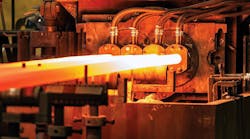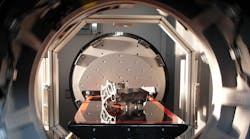A classic conflict exists in the foundry industry as time constraints dictated by customers’ delivery demands are limiting the options for finding the best rigging and process setup for the required casting quality, in combination with producing castings at the lowest cost. This conflict becomes even more challenging considering the lack of available engineering resources foundries are facing. The few engineers available to a foundry operation need to spend their time fulfilling their most important task of finding the optimal process setup at the lowest possible cost. With limited resources, the foundry can no longer afford to have its engineers spending their time on tedious, repetitive tasks, which don’t require their expertise.
The latest development in casting process optimization technology provides foundry engineers with the tools to obtaining an optimized casting design and process layout at the lowest cost, while requiring less of their valuable time spent in front of the computer. Autonomous optimization software performs the tedious and repetitive tasks without any interaction needed by the engineers. The engineers will be responsible only for the initial simulation setup tasks, steps they are familiar with from using traditional casting process simulation tools.
The optimization tools, which are integrated into MagmaSoft® casting process simulation software, also include new statistical tools that analyze multiple process layouts in one view, leading to a faster understanding of how the available process and tooling design variables lead to the optimal process setup at the lowest cost.
Traditional casting process simulation tools are used to optimize the process layout in a step-by-step sequence. Design and process modifications are entered manually into the
simulation tool, simulations are run, and then each of them are reviewed by the engineers through evaluating multiple result files. This process of running individual simulations is usually very tedious and time consuming. In fact, it is often the main reason why foundries don’t use casting process simulations at all, as their engineers don’t have time to perform them.
Another limitation of traditional single simulation runs is that each one considers only one set of process parameters, and do not provide any information on the effect of process variations on the finished casting quality in one comprehensive view. Each one must be evaluated against the others manually by selecting a small number of result files and comparing them on the computer screen.
Process variations, however, have a significant influence on casting quality and costs. It is essential to find the optimal rigging and process layout to understand each process parameter’s impact on casting quality and cost.
Identifying the Optimal Layout
With traditional simulation tools (i.e., a design of experiments [DOE] can be performed manually to understand the process window’s effect on casting quality. However, this requires an enormous amount of an engineer’s time to create the geometries, set up the simulations, and finally, evaluate all the results. Many times these essential DOEs are then not conducted due to the lack of time engineers have.
Today’s computers, however, are so fast that it is commonplace that simulations are performed much faster than the engineers can find the time to review them. A simulation might be finished two hours after the engineer goes home and the computer is sitting idle until the engineer returns the next morning to review results and determine the next actions to be taken by setting up the next simulation. The limiting factor is not the time it takes to run a simulation anymore, but the time engineers can spend in front of the computer. In this example autonomous optimization could run simulations all night, performing 6-8 simulations to test the extremes of a process window, to determine if a selected tooling layout will lead to sound castings over the entire process window.
The autonomous optimization tools integrated with the latest release of MagmaSoft mean engineers do not need to spend significant time setting up and reviewing simulations. They are free to explore a much bigger design space (i.e., group of process or design variations). Process and tooling layout combinations that weren’t under consideration in the traditional approach can now be included in the process optimization process.
Unlike traditional simulation, autonomous optimization requires the engineer to go through the simulation setup only once, but then many simulations will be run. The software autonomously (under “supervision” of the engineer) selects the possible designs, analyzes them and compiles all information in the form of easily to evaluate statistical data.
Autonomous optimization also leads to a much faster understanding of the effects of process and tooling variations on a casting’s quality and cost, as it provides an instantaneous overview of the impact of each design variation and process change. The optimization results are compiled in an efficient manner so each one can be compared to the rest in one report, using statistical tools. This allows engineers to recognize trends immediately, providing them with a better understanding of which process parameters or tooling geometry features have the most significant impact on the quality and cost of a casting.
Many times manual optimization procedures stop short of finding the optimal process layout due to time constraints — the time constraints of the engineer that is, not the computing time available. Shifting tedious and repetitive tasks to the computer by using autonomous optimizations and DOEs allows engineers to take a completely different approach to optimize casting processes and tooling layouts. By using autonomous optimization, the time constraints felt by engineers will no longer impact their ability to find the optimal quality/cost combination, which leads to the most profitable method of producing castings.
Christof Heisser is the president of MAGMA Foundry Technologies Inc. Contact him at [email protected] or visit www.magmasoft.com .










